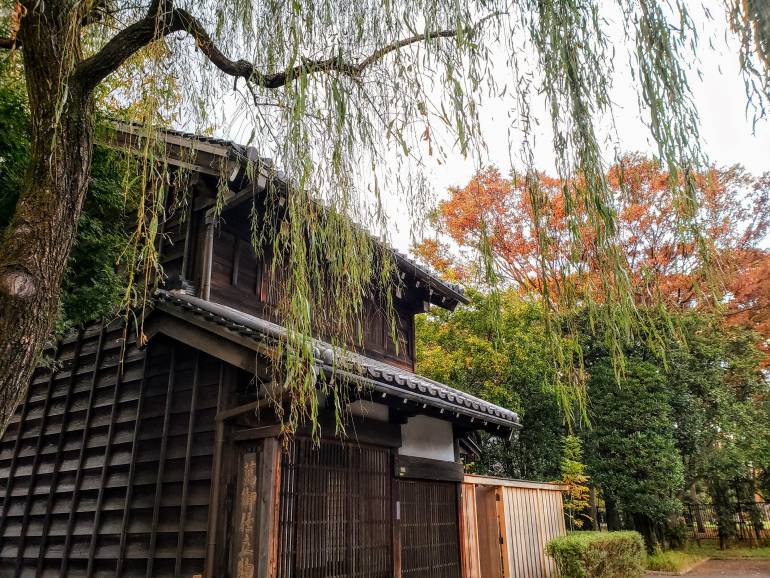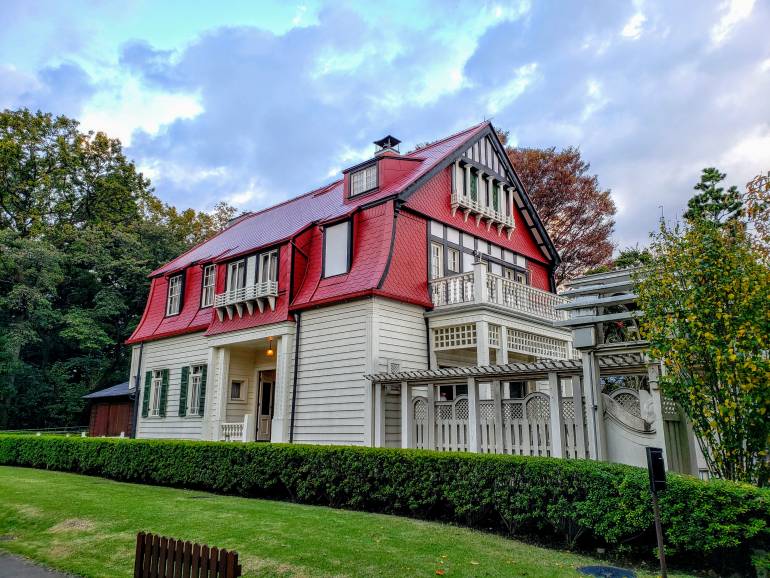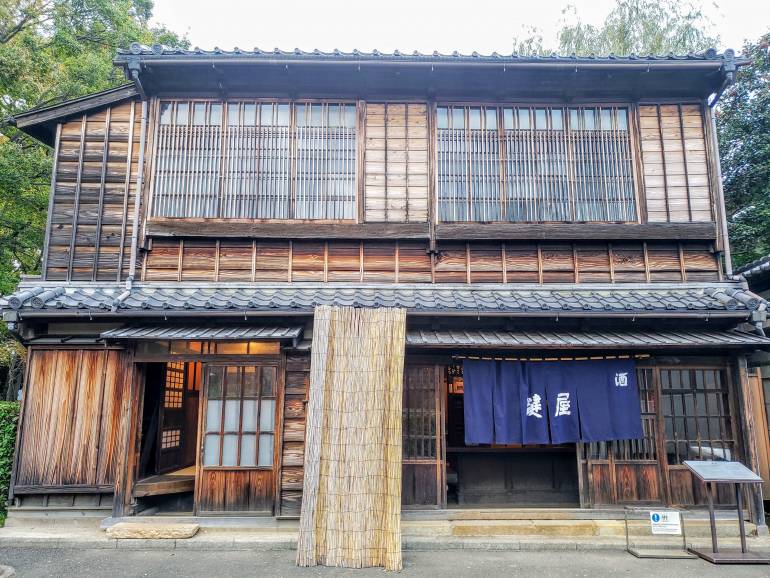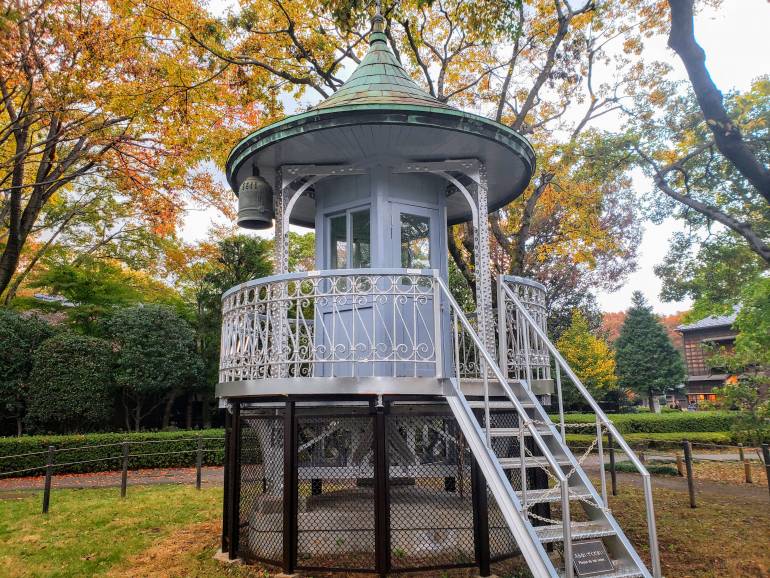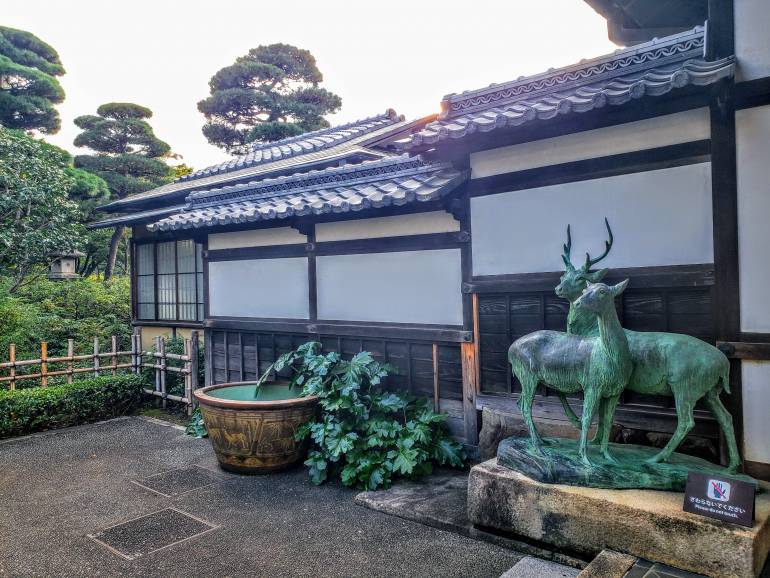If you prefer your museums with a healthy breeze and grass under your feet, this is one for you. The Edo-Tokyo Open Air Architectural Museum is a collection of buildings spanning the centuries—from thatched farmhouses to modernist suburban homes.

Moved and reconstructed from sites across Tokyo, most buildings are from the Meiji period (1868–1912) or later, including an elegant home of a former politician, a public bath house, a stationery shop, forms of public transport and even a police box. Known as the Edo-Tokyo Tatemono-en in Japanese, this museum is a branch of the Edo-Tokyo Museum located in Ryogoku.

The name of the museum might be a little misleading. Yes, it is a museum of architecture, so those inclined will have a great time observing up close how the Japanese constructed the thick thatched roofs called kayabuki in their minka (i.e. non-samurai, “people” homes) in the mid-1700s, or how they incorporated art deco elements in the late Taisho to early Showa period (the Japanese version of the Roaring Twenties). However, this isn’t a geeks-only zone for those with an architecture degree.

The buildings reconstructed in the museum are filled with objects, from furniture to everyday items of their time. In the stationery shop, the displays are filled with brushes and ink stones. In the bar, there are yakitori skewers and beers on the table. On the walls of the grocery store, there are ads for canned goods and beer. In the farmhouses, there are straw raincoats hanging by the door. And lastly, there are offerings on the kamidana Shinto altars.
Things are so realistic that they can feel somewhat eerie at times, as if the people who lived there just went away and left their lives behind. They aren’t actual haikyo (abandoned structures), but depending on the hour you visit and how thin the crowd is, they might feel that way.

These buildings are snapshots of three centuries’ worth of “before” for modern-day Tokyo. What makes it exceptional though is that these are snapshots you can walk into and around. And if you know your history (or consult the plaques in front of the buildings—thankfully there’s plenty of information in English), you will enjoy the small details. For example, the sewer pipes left in the backyard, because children used them as jungle gyms back in the 1960s, when there weren’t any video games and “play” meant simpler equipment and more imagination.

Accessibilty and facilities

The Edo-Tokyo Architectural Museum strives to be a barrier-free attraction. Most buildings are outfitted with ramps, or elevators for two-level structures. Service dogs are permitted.

Wheelchairs, strollers, braille guides and writing devices are available to rent free of charge. Contact the visitor center for more information.
There are also accessible multi-purpose bathrooms (with baby changing stations), a breastfeeding room, and a first-aid room.
Gallery
Getting there

Closest station:
- From Higashikoganei or Musashi-Koganei Station on the JR Chuo Line, or
- Hanakoganei Station on the Seibu Shinjuku Line
From the station:
- Take the CoCo Community Bus and get off at Tatemonoen Iriguchi (Architecture Museum Entrance), or
- Take the 2 or 3 Seibu Bus and get off at Koganeien Nishi Guchi (Koganei Park Western Entrance), or
- Walk about 25 minutes
Bonus tip: Pack a lunch and have a picnic at the nearby Koganei Park. It’s just a few minutes’ walk from the museum.
Children: ¥200
Students: ¥320
Seniors: ¥200
- 1.1 km from Hanakoganei Station Seibu Shinjuku Line (SS18)
- 1.7 km from Musashi-Koganei Station Chūō Line (Rapid) (JC15)



